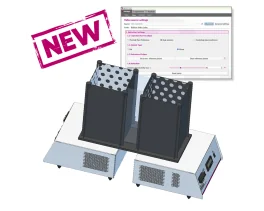Authors
F. Treguer, E. Donal, S. Tamareille, N. Ghaboura, G. Derumeaux et al.
Lab
Faculté de Médecine, Protection et Remodelage du Myocarde, Angers, France.
Journal
Heart and Circulatory Physiology
Abstract
A noninvasive assessment of infarct size and transmural extension of myocardial infarction (TEMI) is fundamental in experimental models of ischemia-reperfusion. Conventional echocardiography parameters are limited in this purpose. This study was designed to examine whether speckle tracking imaging can be used in a rat model of ischemia-reperfusion to accurately detect the reduction of infarct size and TEMI induced by erythropoietin (EPO) as early as 24 h after reperfusion. Rats were randomly assigned to one of three groups: myocardial infarction (MI)-control group, 45 min ischemia followed by 24 h of reperfusion; MI-EPO group, similar surgery with a single bolus of EPO administered at the onset of reperfusion; and sham-operated group. Short-axis two-dimensional echocardiography was performed after reperfusion. Global radial (GS(r)) and circumferential (GS(cir)) strains were compared with infarct size and TEMI assessed after triphenyltetrazolium chloride staining. As a result, ejection fraction, shortening fraction, GS(r), and GS(cir) significantly correlated to infarct size, whereas only GS(r) and GS(cir) significantly correlated to TEMI. EPO significantly decreased infarct size (30.8 + or - 3.5 vs. 56.2 + or - 5.7% in MI-control, P < 0.001) and TEMI (0.37 + or - 0.05 vs. 0.77 + or - 0.05 in MI-control, P < 0.001). None of the conventional echocardiography parameters was significantly different between the MI-EPO and MI-control groups, whereas GS(r) was significantly higher in the MI-EPO group (29.1 + or - 4.7 vs. 16.4 + or - 3.3% in MI-control; P < 0.05). Furthermore, GS(cir) and GS(r) appeared to be the best parameters to identify a TEMI >0.75 24 h after reperfusion. In conclusion, these findings demonstrate the usefulness of speckle tracking imaging in the early evaluation of a cardioprotective strategy in a rat model of ischemia-reperfusion.
Source :

 Pain - Thermal Allodynia / Hyperalgesia
Pain - Thermal Allodynia / Hyperalgesia Pain - Spontaneous Pain - Postural Deficit
Pain - Spontaneous Pain - Postural Deficit Pain - Mechanical Allodynia / Hyperalgesia
Pain - Mechanical Allodynia / Hyperalgesia Learning/Memory - Attention - Addiction
Learning/Memory - Attention - Addiction Physiology & Respiratory Research
Physiology & Respiratory Research











![Dynamic Weight Bearing 2.0 – Postural Module [Add-on]](https://bioseb.com/733-home_default/dynamic-weight-bearing-20-add-on-postural-module.jpg)
























 Pain
Pain Central Nervous System (CNS)
Central Nervous System (CNS) Neurodegeneration
Neurodegeneration Sensory system
Sensory system Motor control
Motor control Mood Disorders
Mood Disorders Other disorders
Other disorders Muscular system
Muscular system Joints
Joints Metabolism
Metabolism Cross-disciplinary subjects
Cross-disciplinary subjects CONFERENCES & MEETINGS
CONFERENCES & MEETINGS